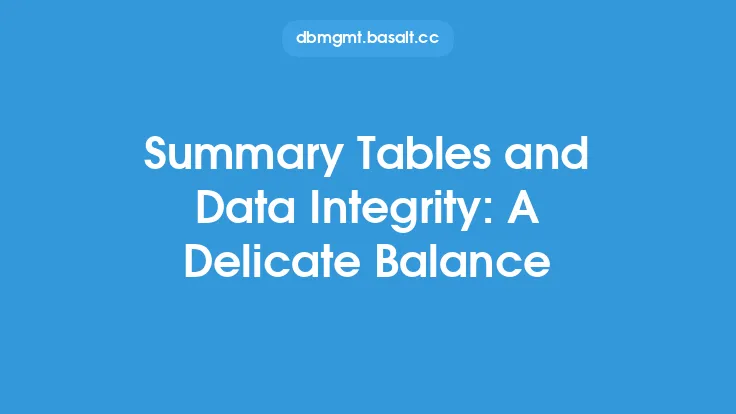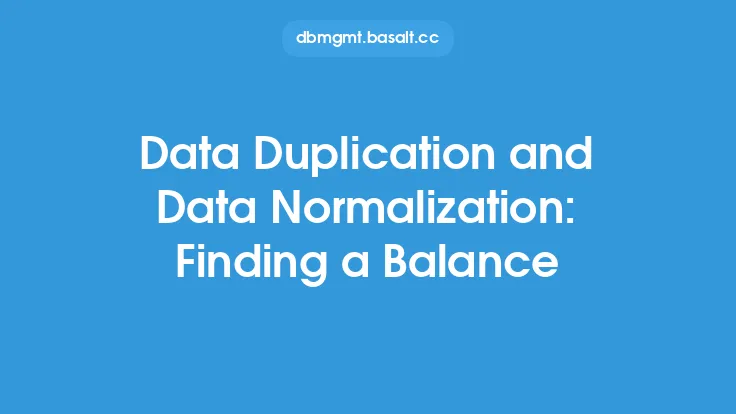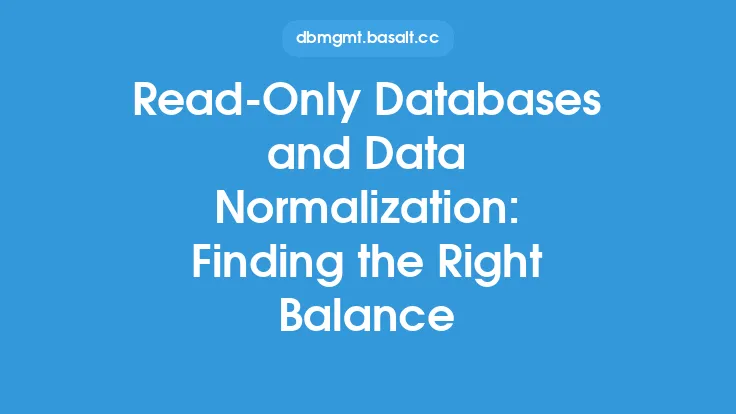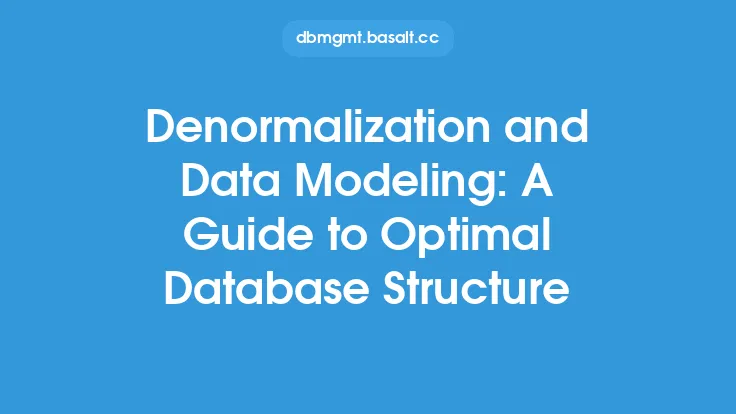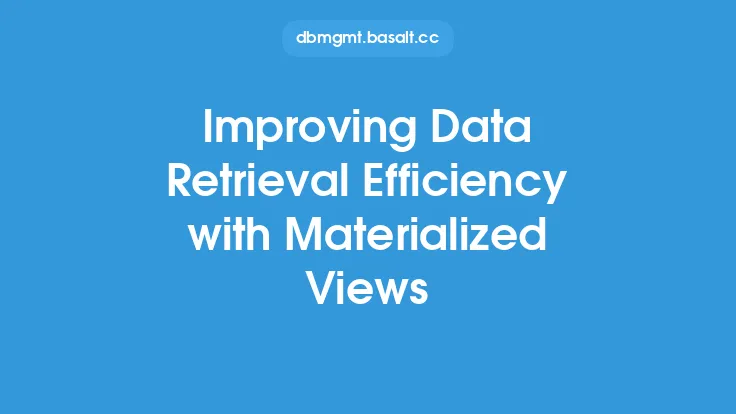Materialized views are a powerful tool in database management, allowing for the storage of pre-computed results of complex queries in a physical table. This can significantly improve query performance, as the results are readily available and do not need to be recalculated every time the query is executed. However, one of the key challenges associated with materialized views is maintaining data consistency. As the underlying data changes, the materialized view must be updated to reflect these changes, ensuring that the pre-computed results remain accurate and reliable.
Introduction to Data Consistency
Data consistency is a critical aspect of database management, ensuring that the data stored in the database is accurate, reliable, and consistent across all tables and views. In the context of materialized views, data consistency refers to the ability of the materialized view to reflect the current state of the underlying data. This can be a challenging task, as materialized views are typically updated periodically, which can lead to temporary inconsistencies between the materialized view and the underlying data.
Types of Data Consistency
There are several types of data consistency that are relevant to materialized views, including:
- Strong consistency: This refers to the ability of the materialized view to always reflect the current state of the underlying data. This can be achieved through the use of transactions and locking mechanisms, which ensure that the materialized view is updated immediately when the underlying data changes.
- Weak consistency: This refers to the ability of the materialized view to reflect the current state of the underlying data, but with some delay. This can be achieved through the use of periodic updates, which update the materialized view at regular intervals.
- Eventual consistency: This refers to the ability of the materialized view to eventually reflect the current state of the underlying data, but with no guarantee of when this will occur. This can be achieved through the use of asynchronous updates, which update the materialized view in the background.
Strategies for Maintaining Data Consistency
There are several strategies that can be used to maintain data consistency in materialized views, including:
- Periodic refresh: This involves updating the materialized view at regular intervals, using a scheduled task or cron job. This can be an effective way to maintain data consistency, but it can also lead to temporary inconsistencies between the materialized view and the underlying data.
- On-demand refresh: This involves updating the materialized view in real-time, as the underlying data changes. This can be an effective way to maintain strong consistency, but it can also be resource-intensive and may impact performance.
- Incremental refresh: This involves updating the materialized view incrementally, using a combination of periodic and on-demand refreshes. This can be an effective way to maintain data consistency, while also minimizing the impact on performance.
Technical Considerations
From a technical perspective, maintaining data consistency in materialized views requires careful consideration of several factors, including:
- Transaction management: This involves using transactions to ensure that the materialized view is updated consistently, and that any errors or inconsistencies are handled correctly.
- Locking mechanisms: This involves using locking mechanisms to prevent concurrent updates to the materialized view, and to ensure that the materialized view is updated consistently.
- Indexing and caching: This involves using indexing and caching to improve query performance, and to reduce the impact of updates on the materialized view.
- Data partitioning: This involves partitioning the data in the materialized view, to improve query performance and to reduce the impact of updates.
Best Practices for Maintaining Data Consistency
To maintain data consistency in materialized views, several best practices can be followed, including:
- Monitor the materialized view: This involves regularly monitoring the materialized view, to detect any inconsistencies or errors.
- Use automated refresh: This involves using automated refresh mechanisms, such as scheduled tasks or cron jobs, to update the materialized view regularly.
- Test and validate: This involves testing and validating the materialized view, to ensure that it is accurate and consistent with the underlying data.
- Document and maintain: This involves documenting and maintaining the materialized view, to ensure that it is up-to-date and consistent with the underlying data.
Conclusion
In conclusion, maintaining data consistency in materialized views is a critical aspect of database management, requiring careful consideration of several technical and strategic factors. By understanding the types of data consistency, and using strategies such as periodic refresh, on-demand refresh, and incremental refresh, database administrators can ensure that their materialized views remain accurate and reliable. Additionally, by following best practices such as monitoring, automated refresh, testing and validation, and documentation and maintenance, database administrators can ensure that their materialized views are consistent with the underlying data, and provide a reliable and efficient way to access complex data.
